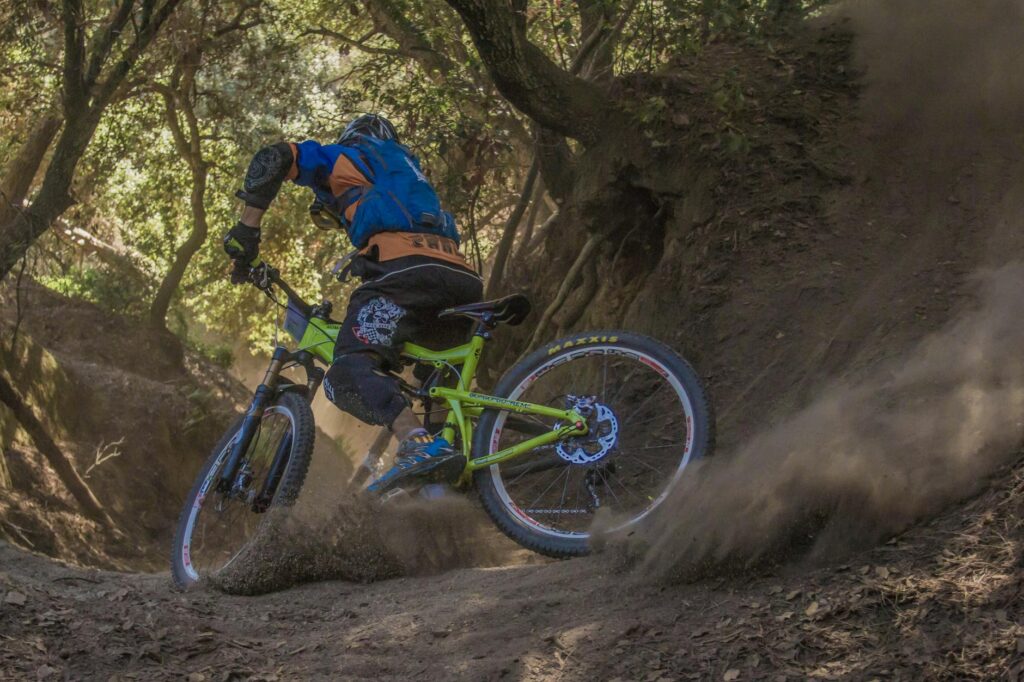Key Takeaways
- Understanding the essential skills for excelling in enduro mountain biking.
- Adopting a focused approach to physical and technical training.
- Leveraging cross-training and recovery for sustained performance.
- Embracing community involvement to enhance competitive experiences.
The Physical Demands of Enduro Mountain Biking
As the sport of enduro mountain biking continues to flourish, attracting both seasoned riders and newcomers, the conversation inevitably turns to what it takes to succeed in this exhilarating and demanding discipline. Success in enduro requires a skillful blend of high-intensity bursts for downhill sections and endurance for transitions. The inevitable question arises: how does one build the comprehensive strength, stamina, and technique crucial for excelling in enduro mountain biking? Expert insights and structured programs such as Enduro Fitness Training suggest that the journey to the podium begins with a dedicated and informed approach to training. The allure of enduro mountain biking lies in its challenging course design, which demands a high level of physical conditioning. Athletes are required not only to persevere through rugged terrain and manage their exertion over extended periods but also to exhibit explosive power during critical race segments. Grappling with the sport’s high aerobic and anaerobic demands means that cyclists must focus on building a foundation of cardiovascular fitness while also honing the muscular fortitude to handle the relentless pounding of the trails.
Technique Mastery: Key to Success in Enduro Mountain Biking
Technical prowess separates the good from the great in the world of enduro mountain biking. Each descent is a strategic puzzle; navigational choices can lead to either a smooth ride or costly seconds lost. Mastery of bike control, cornering, jumping, and drop techniques becomes essential to maintain speed and efficiency. Additionally, following a structured MTB training program is crucial. This program should include skills drills, interval training, and trail simulations to hone your technical abilities and enhance your performance on the most challenging terrains. In this arena, there is no substitute for meticulous, consistent practice. Skillful handling of the unique demands of each trail offers the competitive edge that every enduro cyclist seeks.
Fueling the Ride: Nutrition and Hydration Strategies
The intensity of enduro mountain biking significantly demands the body’s energy reserves. Maintaining performance throughout a race requires a carefully considered and executed nutrition plan. Consumption of carbohydrates to maintain glycogen levels and protein for muscle repair are well-trodden facets of the endurance athlete’s diet. Hydration is equally critical, as even slight dehydration can lead to a steep decline in performance. Innovative recommendations featured on resources like ScienceDaily suggest that nutrition tailored to the demands of the sport not only fuels the body but also accelerates recovery, preparing athletes for the rigors of their next challenge.
Cultivating a Training Mindset
The mindset with which an athlete approaches training can dramatically influence their progression and performance. Developing a resilient mental state that thrives on challenges and views setbacks as opportunities for growth underpins success. This training mindset involves goal setting, visualization techniques, and stress management, all integral for peak performance. Nurturing a positive mental attitude not only aids in pushing physical limits but also ensures consistency in training efforts.
Integrating Periodization into Your Training Schedule
Adopting a periodized training approach allows for structure and progression within an athlete’s regimen. This methodological plan divides the training calendar into phases, each with specific goals and outcomes. For enduro mountain bikers, this could mean focusing on base endurance during the off-season, strength power leading up to the competitive season, and peak conditioning for race days. Balancing these phases promotes continual improvement while staving off the potential for burnout and overuse injuries.
The Role of Cross-Training in Enhancing Performance
While the primary focus of an enduro athlete’s training will be on-the-bike workouts, cross-training plays an invaluable role in overall athletic development. It exposes the body to different stresses, which can lead to improvements in general fitness and a reduction in sport-specific overuse injuries. Engaging in activities like running, swimming, or strength training aids in building a robust cardiovascular base and develops muscle groups that may be neglected by cycling alone. Additionally, the variation in training can refresh an athlete’s mental approach to their sport, keeping motivation high.
Injury Prevention and Recovery Techniques
The physical toll that enduro mountain biking inflicts on the body means that injury prevention must be integral to any training plan. Implementing dynamic warm-ups before rides, proper cooldowns, and regular flexibility work can help maintain joint and muscle health. Recovery strategies such as adequate sleep, proper nutrition, and hydration are vital for repairing muscles and preparing the body for subsequent workouts. Techniques such as foam rolling and massage assist in alleviating muscle soreness and contribute to a more rapid recovery, reducing downtime and enhancing overall performance.
Upgrading Equipment: When and Why
For competitive mountain bikers, equipment choices can affect race outcomes. Balancing the desire for the latest technology with the practical assessment of its impact on performance is critical. Developments in bike technology can offer substantial gains in speed, control, and efficiency. However, upgrades should be needs-based, thoughtfully timed, and grounded in the understanding that technique and fitness are the primary drivers of performance. An athlete’s relationship with their bike is deeply personal, so any upgrades should reflect a clear benefit to the individual’s comfort and riding style.
Community and Competition: Finding Local Rides and Races
For enduro mountain bikers, the community aspect of the sport is as exhilarating as the ride itself. Being part of a biking group provides invaluable support, from sharing trail advice to pushing each other during training sessions. As riders progress, entering local races can be pivotal in developing racecraft and exposure to the competitive atmosphere. The camaraderie found alongside fellow enthusiasts can provide enjoyment and motivation. Riders looking to immerse themselves further into the sport will find resources such as Pinkbike helpful in connecting with the broader biking community and keeping a pulse on the latest mountain biking news and events.




